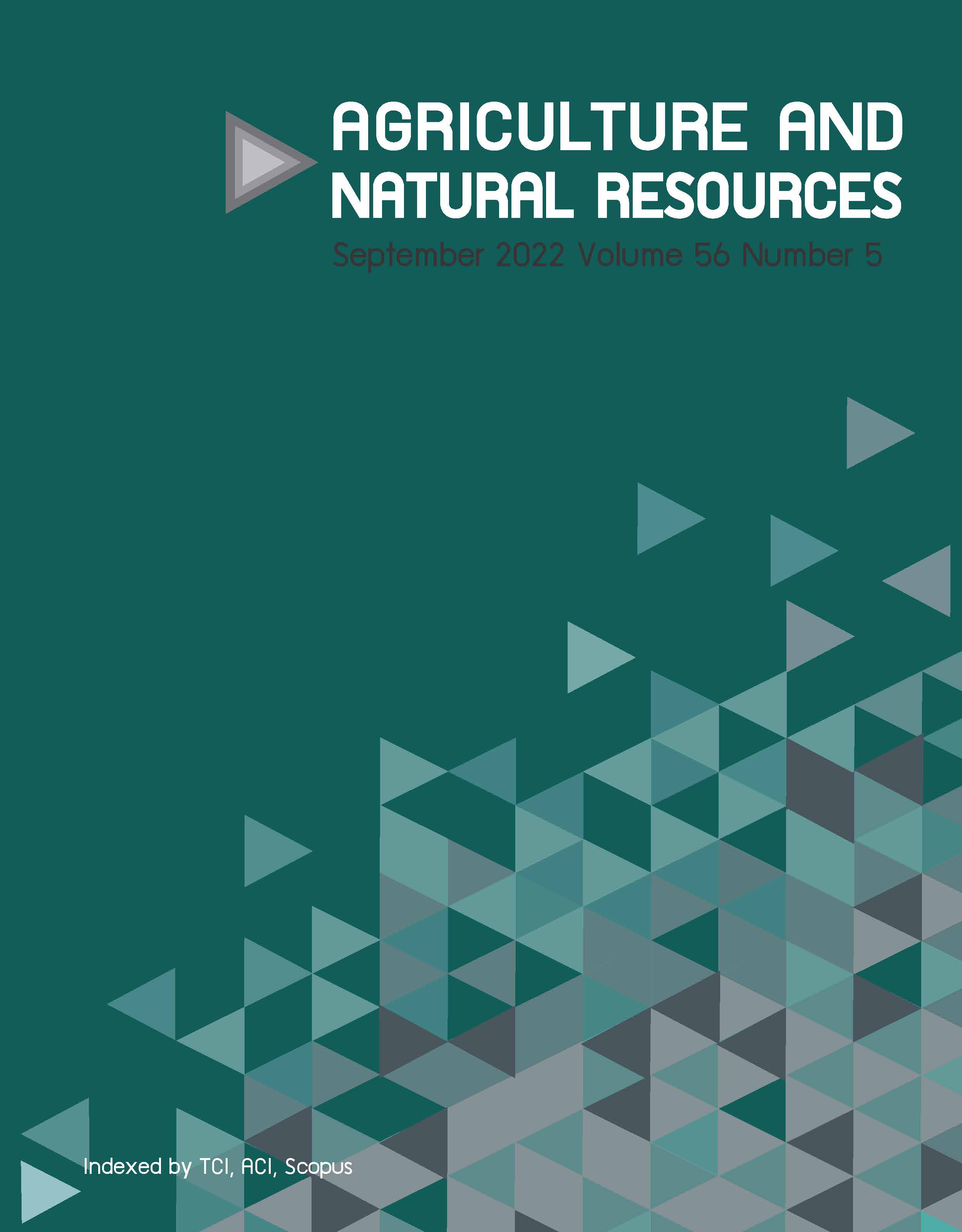Effects of nitrogen levels on sucrose content, disease severity of Xanthomonas oryzae pv. oryzae and yield of hybrid rice (BC4F5)
Keywords:
Bacterial blight (BB), Nitrogen levels, Sucrose, Xanthomonas oryzae pv. oryzaeAbstract
Importance of the work: Phitsanulok 2 (PSL2) is a high-yielding rice commonly cultivated in lower northern Thailand. However, it is susceptible to bacterial blight (BB) disease caused by the bacterium Xanthomonas oryzae pv. oryzae (Xoo), resulting in major grain yield losses.
Objectives: To investigate the BB resistance levels and the effect of nitrogen levels on the sucrose contents in BC4F5 lines carrying the Xa21 gene.
Materials & Methods: The Xa21 gene was introduced into PSL2 using marker-assisted backcrossing. The five BC4F5 lines carrying Xa21 and parental lines were grown with different nitrogen levels, followed by inoculation with XooE.
Results: All five BC4F5 lines had the highest resistance to the BB disease at 75 kg N/ha. The lesion lengths of plants treated with 75 kg N/ha, 150 kg N/ha and 225 kg N/ha under greenhouse conditions were in the ranges 2.8–3.9 cm, 5.65–6.22 cm and 7.67–8.25 cm, respectively. In the field experiment, diseased leaf areas were in the range 7.63–8.34% in the BC4F5 lines, which were not significantly different to IRBB21. The sucrose content in the rice leaves increased when a higher rate of nitrogen fertilizer was applied. All BC4F5 lines had similar plant heights to PSL2. Three BC4F5 lines had greater grain yields per plant than PSL2.
Main finding: All BC4F5 lines had greater yields and showed similar resistance to BB as IRBB21 under field trails at 75 kg N/ha. This study revealed that an overdose of nitrogen fertilizer enhanced the sucrose content in rice leaves and induced severe BB disease.
Downloads
Published
How to Cite
Issue
Section
License
Copyright (c) 2022 Kasetsart Universityonline 2452-316X print 2468-1458/Copyright © 2022. This is an open access article under the CC BY-NC-ND license (http://creativecommons.org/licenses/by-nc-nd/4.0/),
production and hosting by Kasetsart University of Research and Development Institute on behalf of Kasetsart University.







